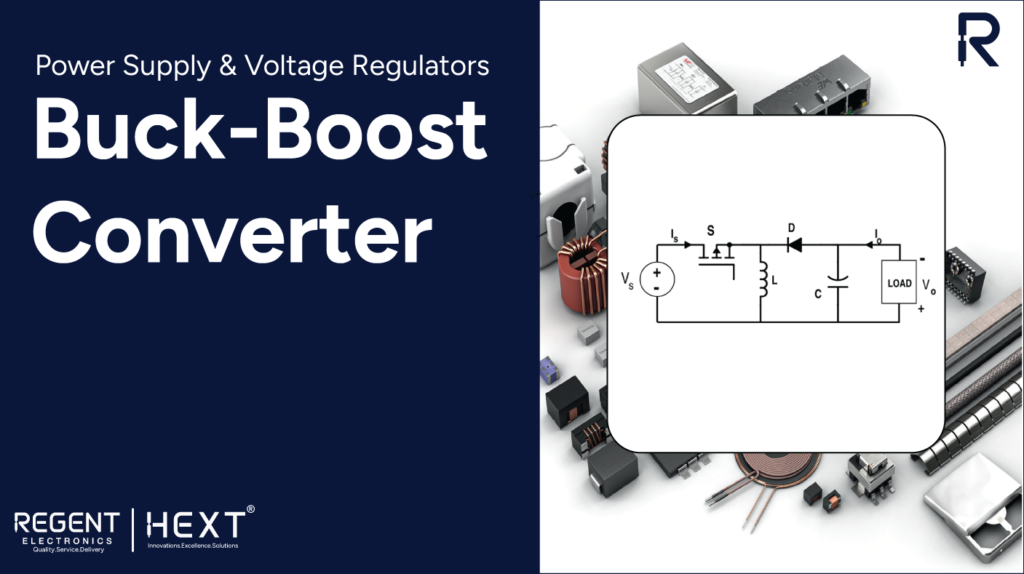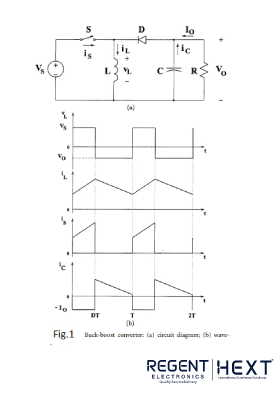
Buck-Boost Converter: An Overview for Efficient Power Conversion
Introduction to Buck-Boost Converters
A Buck-Boost Converter, also known as a DC-DC Boost Converter, is an essential power management device that adjusts voltage levels in electronic circuits. It can step up (boost) or step down (buck) the input voltage to provide a controlled output voltage. This is particularly useful in applications where the voltage fluctuates, such as in battery-operated devices, where the battery voltage starts higher than required and decreases over time as it drains.
What is a Buck-Boost Converter?
A Buck-Boost Converter is a type of DC-to-DC converter that produces an output voltage that can either be greater or less than the input voltage. This versatility makes it ideal for maintaining a consistent voltage despite changes in input levels. The converter can work in two modes:
- Step-up (Boost) Mode: When the input voltage is less than the output voltage (Vin < Vout), the output current is lower than the input current.
- Step-down (Buck) Mode: When the input voltage is greater than the output voltage (Vin > Vout), the output current is greater than the input current.
The basic formula for calculating the output voltage (Vo) is:
Vo = -Vin * D / (1 – D)
Where the negative sign indicates that the output voltage has an opposite polarity compared to the input.
How Does a Buck-Boost Converter Work?

A Buck-Boost Converter consists of several key components:
- MOSFET (Switch)
- Diode
- Inductor
- Capacitor
- DC Voltage Source
The converter uses PWM (Pulse Width Modulation) pulses to control the switching of the MOSFET, adjusting the output voltage by turning it on and off. The voltage output has a reversed polarity — if a positive voltage is input, the output voltage will be negative.
Operation Modes of a Buck-Boost Converter
- Mode 1: Switch is ON, Diode is OFF
When the switch is closed, the inductor starts charging as there is minimal resistance to current flow. The inductor stores energy as it charges, and when the switch turns off, the energy stored in the inductor is released to the load through the diode. - Mode 2: Switch is OFF, Diode is ON
In this mode, the energy stored in the inductor is released to the load. The current flows from the inductor to the load and diode, which helps maintain the energy flow, increasing the output voltage.
Applications of Buck-Boost Converters
- Battery Charging / USB Charging Ports for Portable Devices
Buck-boost converters are used in applications like charging portable devices, ensuring quick and efficient charging without overheating. These converters are used in devices such as smartphones, tablets, and power banks. - Solar Panel Voltage Regulation
Solar panels generate fluctuating voltages depending on sunlight intensity. For instance, the panel voltage might range from 10V to 18V, but a 12V battery needs to be charged. The buck-boost converter adjusts the voltage, ensuring that it always stays at the required level (12V) for efficient charging. - AMOLED Displays for Portable Devices
AMOLED displays require high power efficiency and stable voltage output, which can be efficiently managed by a buck-boost converter. This helps optimize power usage in devices like smartphones and tablets.
Advantages of Buck-Boost Converters
- Efficient Voltage Regulation
The buck-boost converter allows for both voltage stepping up and stepping down using fewer components, making it more cost-effective and efficient. - Wide Input and Output Voltage Range
With a broad input range, buck-boost converters offer exceptional flexibility and can be used in various applications that require constant voltage control. - Lower Duty Cycle
The converter operates at a lower duty cycle, ensuring reduced energy consumption and minimal power loss. - Cost-Effective
Compared to other voltage converters, buck-boost converters are generally more affordable, making them an attractive choice for many applications.
Disadvantages of Buck-Boost Converters
- Limited Gain Efficiency
Buck-boost converters may not achieve very high gain, especially at extreme duty cycles. Efficiency tends to decrease at very small or large duty cycles. - No Input-Output Isolation
Unlike some converters, the buck-boost converter does not offer isolation between the input and output. This can be a disadvantage in systems where isolation is crucial for safety or stability.
Conclusion
As modern electronic systems continue to evolve, they require efficient power conversion for optimal performance. The Buck-Boost Converter is an invaluable tool for designers, offering flexibility in voltage regulation for various applications. Whether used in battery charging, solar power systems, or portable devices, this DC-DC converter ensures stable power delivery. By understanding its working principles and applications, system designers can confidently choose the right converter to meet the needs of their projects.
At Regent Electronics, we offer a wide selection of buck-boost converters that cater to different power requirements. Whether you’re working on small-scale projects or complex systems, our high-quality converters provide reliable and efficient performance. Explore our range of products and power your devices with the best technology available!
